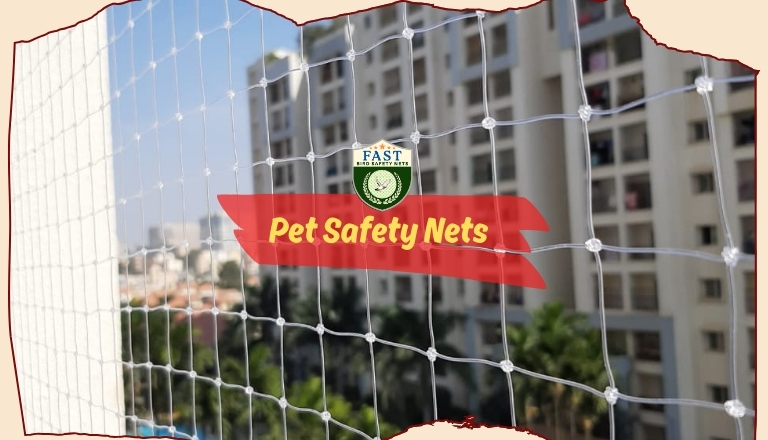For cat owners living in apartments or high-rise buildings in Hyderabad, ensuring the safety of their feline companions while allowing them to enjoy the outdoors is a top priority. One effective solution to this dilemma is the installation of balcony nets specifically designed to prevent cats from falling or escaping. In this guide, we’ll explore the how do you net a balcony for a cat , including important considerations and step-by-step instructions.
Understanding the Need for Balcony Netting:
Curiosity and Exploration: Cats are naturally curious creatures and may be tempted to explore balconies, putting themselves at risk of falling or getting stuck in dangerous situations.
Escape Prevention: Balcony nets provide a barrier that prevents cats from escaping outdoor spaces, offering peace of mind to owners worried about their pets wandering off or getting lost.
Safety Concerns: Falls from balconies can result in serious injuries or fatalities for cats. Netting ensures their safety while allowing them to experience the sights, sounds, and fresh air of the outdoors.
Choosing the Right Netting Material:
Durable and Weather-Resistant: Opt for balcony nets made from durable materials such as high-density polyethylene (HDPE) or nylon, capable of withstanding exposure to sunlight, rain, and wind.
Mesh Size: Select a net with a mesh size small enough to prevent cats from slipping through, typically ranging from 1 to 3 inches. Ensure that the netting is strong enough to support the weight of a cat without tearing.

Preparing for Installation:
Measurements: Accurately measure the dimensions of your balcony to determine the amount of netting needed. Consider any obstacles such as railings, pillars, or protruding structures.
Gather Supplies: Obtain the necessary supplies, including balcony netting, zip ties or hooks, scissors, and a measuring tape.
Safety Precautions: Prioritize safety during installation. Steer clear of extreme weather or unstable surfaces when working. Wear suitable personal protective gear if needed.
Installation Process:
Attach Mounting Points: Securely fasten hooks or anchors along the perimeter of the balcony where the netting will be attached. Ensure that these mounting points are stable and capable of supporting the weight of the net.
Install Netting: Unroll the balcony netting and attach it to the mounting points using zip ties or hooks. Start from one corner and work your way around the balcony, ensuring the netting is taut and securely fastened.
Secure Edges: Pay special attention to the edges of the netting, ensuring they are tightly secured to prevent cats from accessing gaps or loose ends.
Trim Excess Netting: Once the netting is securely in place, trim any excess material using scissors to achieve a neat and tidy appearance.
Maintenance and Safety Tips:
Regular Inspections: Periodically inspect the balcony netting for signs of wear, damage, or loose attachments. Replace any damaged or worn-out sections promptly.
Supervision: While balcony netting provides a level of safety, it’s essential to supervise your cat whenever they are outdoors to prevent accidents or escapes.
Enrichment: Enhance your cat’s outdoor experience by providing toys, scratching posts, and comfortable resting areas on the balcony.
Conclusion:
In Hyderabad’s urban landscape, balcony netting offers a practical and effective solution for cat owners seeking to provide a safe outdoor environment for their pets. By following the guidelines outlined in this guide and prioritizing safety and quality in balcony net installation, cat owners can enjoy peace of mind knowing that their beloved feline companions can safely experience the joys of the outdoors from the comfort of their balcony.






